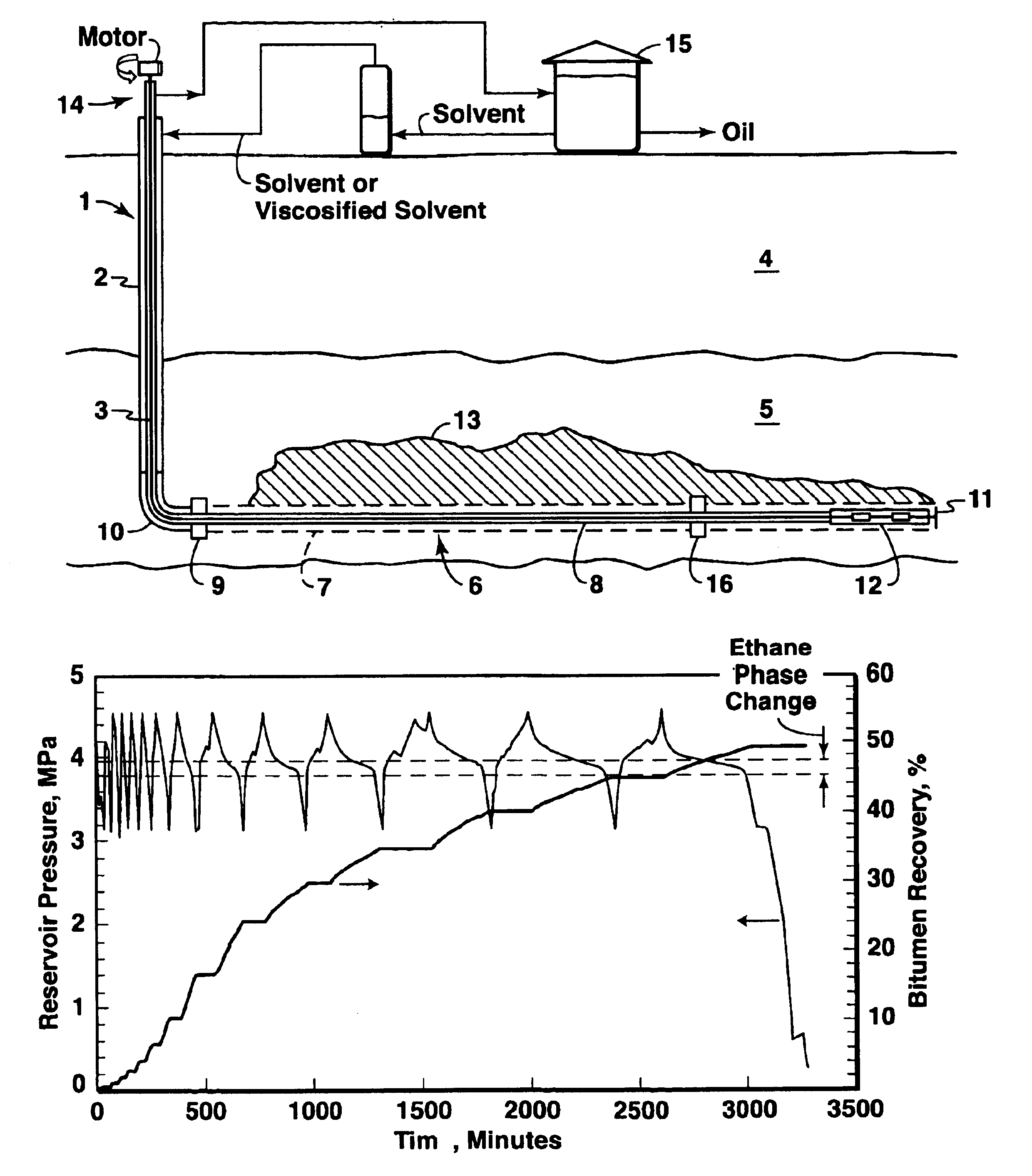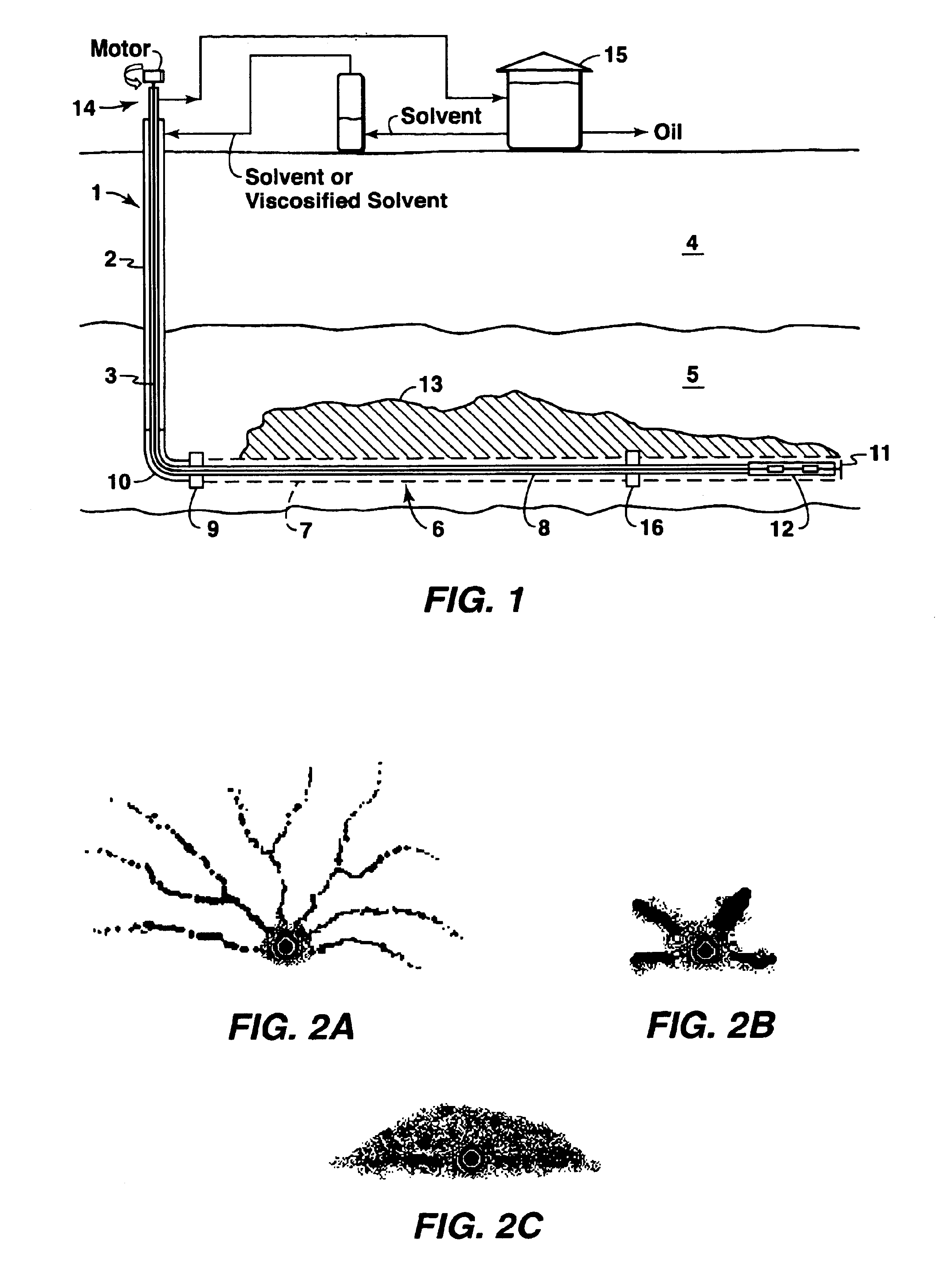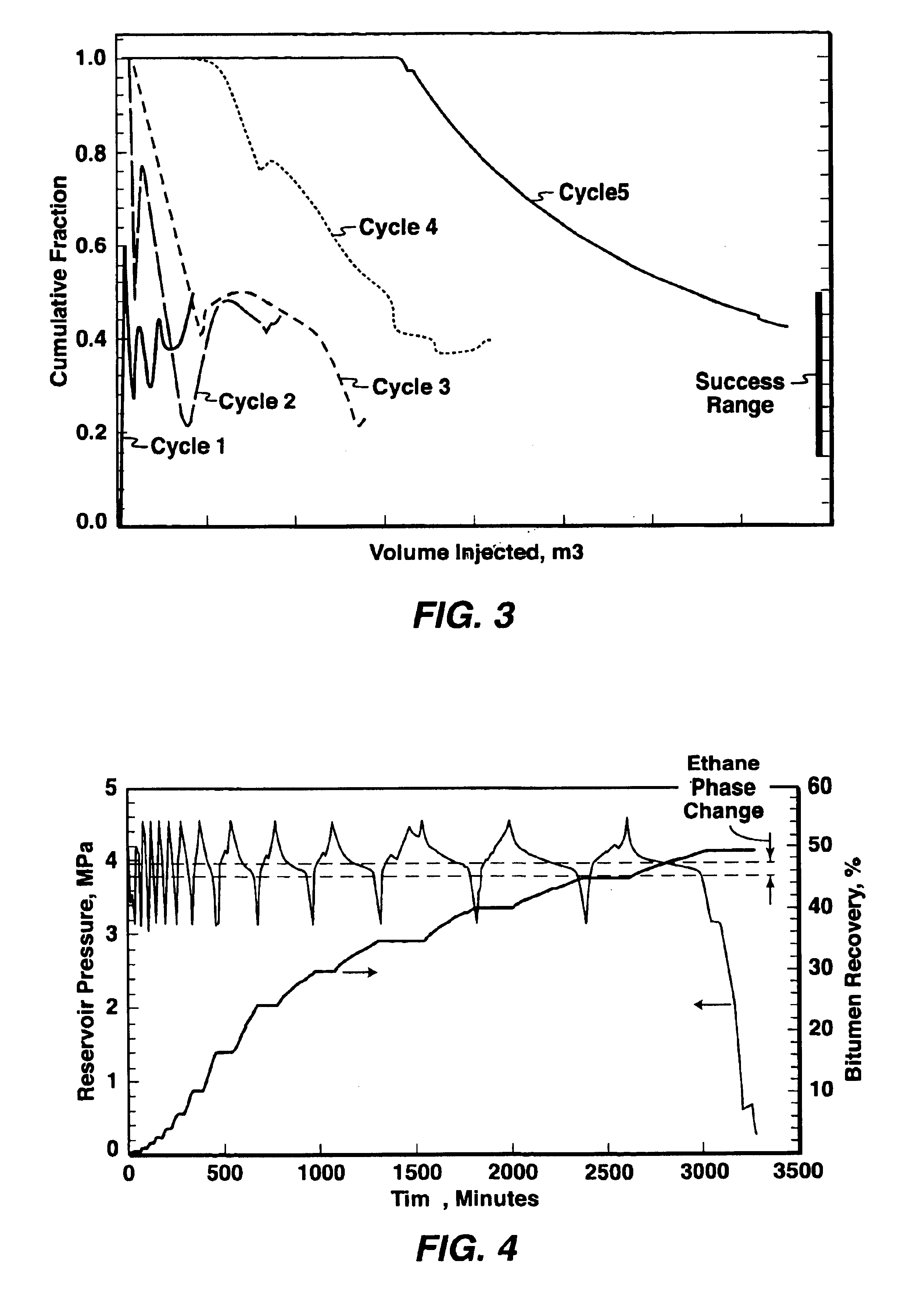Cyclic solvent process for in-situ bitumen and heavy oil production
a solvent and in-situ technology, applied in drinking water installations, borehole/well accessories, cabinets, etc., can solve the problems of insufficient solvent distribution, high solvent cost, and inability to achieve effective solvent distribution in bitumen reservoirs
- Summary
- Abstract
- Description
- Claims
- Application Information
AI Technical Summary
Benefits of technology
Problems solved by technology
Method used
Image
Examples
Embodiment Construction
Commercial Scale Application of Cyclic Solvent Process
An example of how the process can be applied to produce Cold Lake bitumen on a commercial scale is described below. Field scale prediction from the simulation indicates that a commercial well of 750 m long can produce approximately 50 m3 / d of bitumen on the average from a Cold Lake thin reservoir. Sixty such wells (see FIG. 1) on production operations would be required for a continuous bitumen production of 3,000 m3 / d at a central plant. Each well would operate 9 years and recover about 25-30% of the bitumen in place. New wells would have to be drilled and started up to replace those that are approaching the end of the well life.
To reduce cost and environmental impact, ten wells are drilled from the same surface pad location. The horizontal sections of the 5 wells are oriented in parallel in the same direction in the reservoir while the other five wells are oriented in the opposite direction. Spacing of the wells in parallel in t...
PUM
| Property | Measurement | Unit |
|---|---|---|
| boiling point | aaaaa | aaaaa |
| boiling point | aaaaa | aaaaa |
| boiling point | aaaaa | aaaaa |
Abstract
Description
Claims
Application Information
 Login to View More
Login to View More - R&D
- Intellectual Property
- Life Sciences
- Materials
- Tech Scout
- Unparalleled Data Quality
- Higher Quality Content
- 60% Fewer Hallucinations
Browse by: Latest US Patents, China's latest patents, Technical Efficacy Thesaurus, Application Domain, Technology Topic, Popular Technical Reports.
© 2025 PatSnap. All rights reserved.Legal|Privacy policy|Modern Slavery Act Transparency Statement|Sitemap|About US| Contact US: help@patsnap.com



